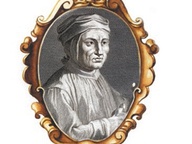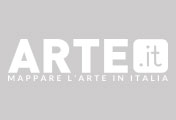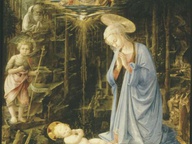Amelie von Wulffen. Ragazze dietro le sbarre (Mädchen hinter Gittern)
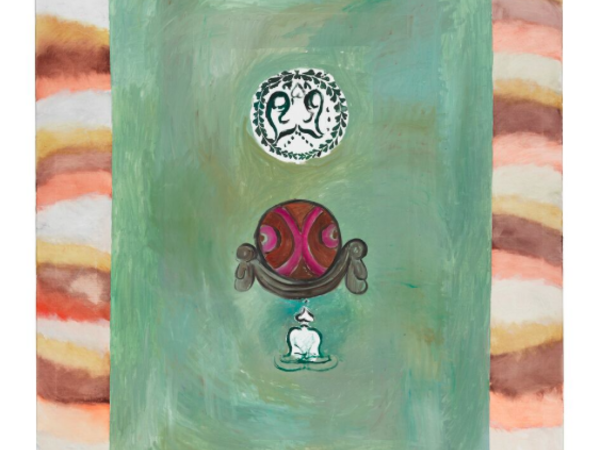
© Gunter Lepkowski | Amelie von Wulffen, Untitled, 2018
From 15 Novembre 2018 to 19 Gennaio 2019
Milan
Place: Gió Marconi
Address: via Tadino 20
Times: From Tuesday to Saturday 11am-7pm
Telefono per informazioni: +39 02 29404373
E-Mail info: info@giomarconi.com
Official site: http://www.giomarconi.com/
Gió Marconi is pleased to announce Ragazze dietro le sbarre (Mädchen hinter Gittern), an exhibition of new works by the German artist Amelie von Wulffen, her second at the gallery. Von Wulffen’s latest body of work furthers her yearslong scrutiny of painting as a medium that so often seems to press on without self-awareness.
More than any other approach to art making, painting is venerated for its history, and von Wulffen picks at this edifice from the inside by borrowing from some of the medium’s less sterling chapters. Genre permeates the paintings on view, with von Wulffen incorporating the dimpled lemon rinds of Dutch still life painting and the ribbony brushwork of expressionism. She utilizes the brown hued bluntness of the German palette – a favorite of 18th century genre painters through to Anselm Kiefer – as if it were a genre all its own. The lower brow echelons of painting are not omitted – there are passages clearly inspired by the mass produced, holiday-souvenir variety of painting.
In one work, the same cliché vignettes are painted over and over again like a compulsive tic. One depicts a street corner and the other an autumn landscape, two of the medium’s more quintessential subjects. On top is a nude reaching for an orange. These are they types of things that children imagine artists making, but not what they actually do. In painting them, von Wulffen simultaneously allows herself a short respite from reality and illustrates the chasm between different understandings of the medium. Painting has a broader and stranger definition than we often acknowledge and it is called to perform in myriad contexts, many of which have been effectively chased out of town, but not here.
A still life collects the usual silver jugs, glass bottles and half peeled lemon, but two framed photos spoil the historic setting with their contemporaneity. They are the variety seen in suburban homes: cute kids posing, panting dogs. The sensation is like a brother or sister calling to talk about some meaningless family drama while one is trying to masturbate. Another painting pictures a somber dinner table scene. Perched in the corner is a woman eating an ice cream and watching a series about prisoners on death row. Reality seems to interrupt fantasy, or is it vice versa. Perhaps ignoring reality is a new form of universality. A hysteric head in another painting asks if we’ve seen the new House of Cards.
This opposition runs through von Wulffen’s paintings like a conflicted train of thought, wavering between impulse and reason, repression and facade, personal and universal. Difficult decisions are furloughed in favor of which flavor Magnum or Netflix show to choose. ‘Ragazze dietro le sbarre’ paints a portrait not only of the long, strange history of painting, but of interiority, where all of us spend the majority of our time.
Patrick Armstrong
Amelie von Wulffen was born in Breitenbrunn, Germany in 1966. She studied at the Academy of Fine Arts Munich. From 2006 to 2011 she was professor of Painting at the Academy of Fine Arts Vienna. Von Wulffen lives and works in Berlin.
Amelie von Wulffen will have solo exhibitions at the Kunsthalle Bern in 2019 and the Kunstwerke in Berlin in 2020.
Recent solo exhibitions include: Studio Voltaire, London (2017); Pinakothek der Moderne, Munich (2015); Portikus, Frankfurt (2013); Aspen Art Museum, Aspen (2012); Kunstverein Düsseldorf (2006); Centre Pompidou, Paris (2005); Museum of Contemporary Art, Basel (2005)
Her work has been shown at the 50th Venice Biennial (2003) and at Manifesta 5 (2004).
Amelie von Wulffen's works are in important public collections, among them: MoMA, New York; Museum of Contemporary Art, Los Angeles; Städel Museum, Frankfurt; Pinakothek der Moderne, Munich; Centre Pompidou, Paris; Hammer Museum, Los Angeles; Collection of Contemporary Art of the Federal Republic of Germany, Bonn; Staatliche Museen zu Berlin, Berlin; Fonds régional d'art contemporain, Auvergne and Museum of Contemporary Art, Freiburg.
Opening: Thursday, November 15, 2018; 7pm-9 pm
More than any other approach to art making, painting is venerated for its history, and von Wulffen picks at this edifice from the inside by borrowing from some of the medium’s less sterling chapters. Genre permeates the paintings on view, with von Wulffen incorporating the dimpled lemon rinds of Dutch still life painting and the ribbony brushwork of expressionism. She utilizes the brown hued bluntness of the German palette – a favorite of 18th century genre painters through to Anselm Kiefer – as if it were a genre all its own. The lower brow echelons of painting are not omitted – there are passages clearly inspired by the mass produced, holiday-souvenir variety of painting.
In one work, the same cliché vignettes are painted over and over again like a compulsive tic. One depicts a street corner and the other an autumn landscape, two of the medium’s more quintessential subjects. On top is a nude reaching for an orange. These are they types of things that children imagine artists making, but not what they actually do. In painting them, von Wulffen simultaneously allows herself a short respite from reality and illustrates the chasm between different understandings of the medium. Painting has a broader and stranger definition than we often acknowledge and it is called to perform in myriad contexts, many of which have been effectively chased out of town, but not here.
A still life collects the usual silver jugs, glass bottles and half peeled lemon, but two framed photos spoil the historic setting with their contemporaneity. They are the variety seen in suburban homes: cute kids posing, panting dogs. The sensation is like a brother or sister calling to talk about some meaningless family drama while one is trying to masturbate. Another painting pictures a somber dinner table scene. Perched in the corner is a woman eating an ice cream and watching a series about prisoners on death row. Reality seems to interrupt fantasy, or is it vice versa. Perhaps ignoring reality is a new form of universality. A hysteric head in another painting asks if we’ve seen the new House of Cards.
This opposition runs through von Wulffen’s paintings like a conflicted train of thought, wavering between impulse and reason, repression and facade, personal and universal. Difficult decisions are furloughed in favor of which flavor Magnum or Netflix show to choose. ‘Ragazze dietro le sbarre’ paints a portrait not only of the long, strange history of painting, but of interiority, where all of us spend the majority of our time.
Patrick Armstrong
Amelie von Wulffen was born in Breitenbrunn, Germany in 1966. She studied at the Academy of Fine Arts Munich. From 2006 to 2011 she was professor of Painting at the Academy of Fine Arts Vienna. Von Wulffen lives and works in Berlin.
Amelie von Wulffen will have solo exhibitions at the Kunsthalle Bern in 2019 and the Kunstwerke in Berlin in 2020.
Recent solo exhibitions include: Studio Voltaire, London (2017); Pinakothek der Moderne, Munich (2015); Portikus, Frankfurt (2013); Aspen Art Museum, Aspen (2012); Kunstverein Düsseldorf (2006); Centre Pompidou, Paris (2005); Museum of Contemporary Art, Basel (2005)
Her work has been shown at the 50th Venice Biennial (2003) and at Manifesta 5 (2004).
Amelie von Wulffen's works are in important public collections, among them: MoMA, New York; Museum of Contemporary Art, Los Angeles; Städel Museum, Frankfurt; Pinakothek der Moderne, Munich; Centre Pompidou, Paris; Hammer Museum, Los Angeles; Collection of Contemporary Art of the Federal Republic of Germany, Bonn; Staatliche Museen zu Berlin, Berlin; Fonds régional d'art contemporain, Auvergne and Museum of Contemporary Art, Freiburg.
Opening: Thursday, November 15, 2018; 7pm-9 pm
SCARICA IL COMUNICATO IN PDF
COMMENTI

-
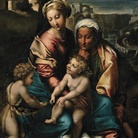 Dal 31 gennaio 2024 al 04 maggio 2025
Fermo | Palazzo dei Priori
Dal 31 gennaio 2024 al 04 maggio 2025
Fermo | Palazzo dei Priori
-
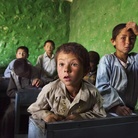 Dal 20 dicembre 2024 al 04 maggio 2025
Fermo | Palazzo dei Priori
Dal 20 dicembre 2024 al 04 maggio 2025
Fermo | Palazzo dei Priori
-
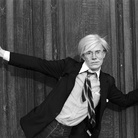 Dal 20 dicembre 2024 al 04 maggio 2024
Gorizia | Palazzo Attems Petzenstein
Dal 20 dicembre 2024 al 04 maggio 2024
Gorizia | Palazzo Attems Petzenstein
-
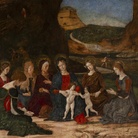 Dal 18 dicembre 2024 al 18 dicembre 2024
Venezia | Museo Correr
Dal 18 dicembre 2024 al 18 dicembre 2024
Venezia | Museo Correr
-
 Dal 14 dicembre 2024 al 02 marzo 2025
Palermo | Palazzo Abatellis
Dal 14 dicembre 2024 al 02 marzo 2025
Palermo | Palazzo Abatellis
-
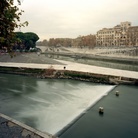 Dal 12 dicembre 2024 al 23 febbraio 2025
Roma | Palazzo Altemps
Dal 12 dicembre 2024 al 23 febbraio 2025
Roma | Palazzo Altemps
